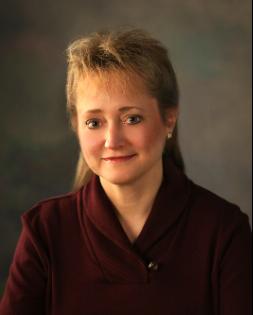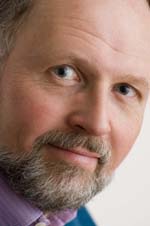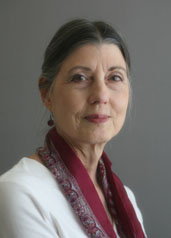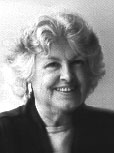Enlightenment: Elements of Self-Care
By Martha Libster
Originally printed in the Summer 2009 issue of Quest magazine.
Citation: Libster, Martha. "Enlightenment: Elements of Self-Care." Quest 97. 3 (Summer 2009): 96-101.
 In September 2007 I went to London to present a paper called the Elements of Care, a historical work linking Hermeticism with health, the environment, and the history of nursing. Before delivering the paper, I spent two days doing research in the British Library and had a strong prompting to look at the Mahatma Letters. Amazingly, I came upon these words of Koot Hoomi in an 1883 letter to the London Lodge: "The Western public should understand the Theosophical Society to be 'a Philosophical School constituted on the ancient Hermetic basis'. . . Hermetic philosophy is universal and unsectarian. . . . Hermetic philosophy suits every creed and philosophy and clashes with none. It is the boundless ocean of Truth, the cultural point whither flows and wherein will meet every river, as every stream—whether its source be in the East, West, North or South."* Thus I decided to write this article for Quest.
In September 2007 I went to London to present a paper called the Elements of Care, a historical work linking Hermeticism with health, the environment, and the history of nursing. Before delivering the paper, I spent two days doing research in the British Library and had a strong prompting to look at the Mahatma Letters. Amazingly, I came upon these words of Koot Hoomi in an 1883 letter to the London Lodge: "The Western public should understand the Theosophical Society to be 'a Philosophical School constituted on the ancient Hermetic basis'. . . Hermetic philosophy is universal and unsectarian. . . . Hermetic philosophy suits every creed and philosophy and clashes with none. It is the boundless ocean of Truth, the cultural point whither flows and wherein will meet every river, as every stream—whether its source be in the East, West, North or South."* Thus I decided to write this article for Quest.
*This passage can be found in letter 120 of the chronological edition of The Mahatma Letters, page 420; emphasis in the original. K. H's remark regarding the "Philosophical School" is citing a statement by Anna Kingsford, then president of the London Lodge—Ed.
In the Hermetic tradition, enlightenment results from the conjunction of seemingly opposing forces. It may often seem that nature and technology are one pair of these opposing forces, especially as they relate to caring and healing. But there are some peoples, such as the Mayans, who believe that the twenty-first century portends a new era of unification between traditional and contemporary knowledge in the relationship between nature and technology.
While technology can help to save lives, it does not heal in an ultimate sense. Healing requires more than the eradication of disease, because it involves the quest for a holistic understanding of the life lessons that come with every illness. Cancer patients who complete the final course of chemotherapy still need comfort, care, and education that support the restoration of their bodies and energy fields as they explore the meaning that the disease has held for them. Premature infants who "graduate" from the neonatal intensive care unit begin a new phase of healing: adaptation to life without machine noise and nurses. They and their families heal as they work through the process of becoming whole. From infant to elder, this process, conducted by a person's soul and enhanced by the spirit, the higher Self, is anchored in the matter of the physical self.
Hermes Trismegistus, the mythical figure whom the Greeks considered a messenger of the gods and the Egyptians equated with Thoth, the god of knowledge, stated that matter was the "vehicle of becoming," according to H. P. Blavatsky (Secret Doctrine I, 271). It is the embodiment of Self as matter that is the focus of healing. The four essential elements of matter are traditionally described as fire, air, water, and earth, along with a fifth energy, or quintessence, that some of the Greeks called pneuma (literally "breath" or "spirit") and which is sometimes equated with akasha or "ether." (This is not to be confused with the substance that is used as an anesthetic by mainstream medicine.) A healthy person was one who experienced the proper balance of the elements and the activity of pneuma.
The Hermetic texts have inspired paganism, Judaism, Christianity, Islam, and Gnosticism. Eastern religions such as Buddhism, Taoism, and Hinduism share similar concepts and terminology. In these healing traditions, each of the five elements is related to one of the five directions. Fire is usually correlated to the south, air to the west, water to the north, ether to the east, earth to the center.
These traditions also hold that these five elements exist within the Self of every human being. Knowledge of these elements has been revered throughout the ages. In the Celtic tradition, the elements are considered "doorways into an infinite universe" (Matthews, 267). The Prasna Upanishad equates understanding of the elements with the understanding of Self: "All things find their final peace in their inmost Self, the Spirit: earth, water, fire, air, space [i.e., ether] and their invisible elements. . . . He who knows, O my beloved, that Eternal Spirit wherein consciousness and the senses, the powers of life and the elements find final peace, knows the All and has gone into the All." These teachings form the foundation for the traditional medicine of India called ayurveda, the "science of life."
Balance or harmony among the elements is also central to traditional Chinese medicine, Japanese Kampo, Persian Unani medicine, and the medicine wheel of the Native Americans as well as to Western nursing practice and biomedicine. Early Greek medical theory, known as "humoral" theory, the foundation of Western medicine, associated health with balance in the four humors. These humors—yellow bile, blood, phlegm, and black bile—correspond to the elements fire, air, water, and earth respectively. The elements are characterized by their unique qualities: fire is hot and dry; water, cold and moist; earth, cold and dry; and air, moist and hot. By altering these qualities, one could effect change in the elements; for example, one could turn water into steam by applying heat.
Energetic principles are used to describe people as well as remedies. For example, both a person with a fever and the herbal remedy cayenne pepper are regarded as hot. Balancing the elements fosters harmony in the internal and external environments of the person. Thus, if someone is feverish or hot, she might be cooled with a cold water compress or given cool peppermint tea to drink. The environment also includes these elements in the form of temperature (fire), air, fluid (water), and substance (earth) within and around the patient. Diet, rest, and lifestyle, as well as thought, thus affect the internal balance of the patient in relation to the external, physical environment.
Creating a healing environment within and without by engaging the elements and their qualities has been foundational in American health care for centuries. The first half of the nineteenth century provides some notable examples. Prior to the Civil War, American health care was highly pluralistic, since mainstream physicians had not yet established the dominance that they hold today. The title "doctor" might refer to a conventional physician, an herb doctor, an indigenous healer, a homeopath, or a "water-curist," to name a few (Beecher, 279). Americans were encouraged to be their own doctors.
Self-Care and Nature Cure
Connection with nature was a central focus in nineteenth-century American health care. In 1835, American physician Jacob Bigelow read his essay on "self-limited diseases" before the Massachusetts Medical Society, in which he encouraged physicians to rethink their practice of prescribing medicine for all diseases. He stated that "some diseases are controlled by nature alone" and that the physician was "but the minister and servant of nature," who was to "aid nature in her salutary intentions, or to remove obstacles out of her path."
Many other physicians of the period believed that the body had a natural tendency to heal itself and that nature did the curing. Wooster Beach, an American physician who had turned to the use of botanical remedies, wrote in 1843, "In reality we can cure nothing. We can only remove the offending cause, while nature performs a cure; and, therefore, lay it down as a fundamental maxim in medicine, that all the physician can do is, to act as a servant or handmaid to nature" (Beach, 188). The English nurse Florence Nightingale echoed these words on the other side of the Atlantic when she wrote in 1859: "Nature alone cures...and what nursing has to do in either case, is to put the patient in the best condition for nature to act upon him" (Nightingale, 110).
Nurses among the nineteenth-century Shakers, Latter-Day Saints, and Sisters of Charity used herbal remedies extensively in their care for the sick. They routinely prescribed teas and syrups as well as topical remedies such as poultices, liniments, and compresses. It was common for nurses to make their own remedies from the plants growing in their gardens or in local fields and forests and to teach their patients how to make and apply the same remedies. During the time nature took to heal, the patient was nursed with the intent of "alleviating pain, procuring sleep, and guarding the diet," according to Bigelow. The community maintained a number of healing networks in which recipes and remedies were shared freely and lovingly in a spirit of helpfulness and caring.
In the nineteenth century, the expertise of a doctor of any type was determined by his ability to diagnose disease and prescribe medicines. Nurses focused on "sickroom management," applying remedies and creating a healing environment in which nature could effect a cure. Sickroom management included preparing the diet as well as regulating the elements of the patients' surroundings that influenced their health, such as room temperature (fire), air flow, providing pure water for drinking and bathing, and preparing the sickbed and cleaning the area (earth). Ether was represented more subtly in the intention that motivated the care, particularly kindness to those who were ill.
It is not clear that caregivers were generally aware that the roots of their practice lay in the Hermetic tradition. Nevertheless, interaction with the elements was in essence an invitation to enter into the process of becoming Self. The simplest acts of shifting, moving, changing, and arranging one or more of the elements of care was known to affect healing.
Simple Soul-utions
Incorporating the five elements in self-care is vital to the well-being of the student of Truth. As with so many of the ancient ways that have endured the test of time, this kind of care involves some of the least expensive, most accessible, and, in my experience as a nurse, most profound healing solutions. One poignant example can be found in the writings of an American nurse from the mid-nineteenth century, Sister of Charity Matilda Coskery, who pioneered the humane care of the insane. Along with her nurse companions and a physician by the name of William Stokes, Sister Matilda opened an asylum in 1840 in which she implemented moral therapy in the institutionalized care of the mentally ill. The focus of moral therapy was to create a healing environment and to treat each patient with kindness. Sister Matilda wrote that kindness would "forever be the remedy of remedies." She managed fire when she dealt with "warmth" in the regulation of room temperature, body heat, and preparation of the coverings on the sickbed. The nurse was advised to manage fever by arranging bedcovers, administering brandy to increase internal warmth, and applying mustard plasters to bring heat to a desired part of the body. The air element was represented in Sister Matilda's advice on proper ventilation of the sickroom by the simple act of opening and closing windows. Footbaths, shower baths, sweats, and sponging were some of the water interventions used. The earth element was incorporated by way of numerous herbal applications. She recommended poultices of hops for pain and herbal teas for many conditions, just as had the women of her religious tradition dating back to 1633. Sister Matilda specifically addressed applications such as preparing and administering herbal teas and cautioned the nurses that tea preparation was not a "simple matter." Like other "seemingly small things" in the hands of the nurse, it could make the difference between the life and death of the patient.
In many industrialized countries, the image of medicine is often that of a pill or capsule, but prior to the mid-twentieth century, this was not the case. Medicine included toddies, poultices, soups, liniments, salves, hot water bottles, and visits to the ocean. There are numerous examples of these kinds of remedies in the advice books, journals, recipe books, and community records of the period.
Beliefs associated with the use of medicines are passed from generation to generation. Such beliefs include knowledge of the four humors and the importance of the balance of the elements as described in Hermeticism. Another is that the real "medicine" exists within both the healer and the one who pursues healing. Healing modalities from surgery to chicken soup, from lemon compresses to floral waters, are among the forms created and received by people as medicine. Pharmaceuticals, herbal teas, hot baths, and healthy diets are all instruments or vessels of the true medicine that is within the Self.
Many great teachers East and West have taught a path of Self-awareness that leads to a greater understanding of inner medicine. Indigenous peoples' healing rituals honor the healing spirit within that manifests as ether, fire, air, water, and earth in all matter. Eastern rishis have taught the path of Self-knowledge for centuries. Sri Yukteswar, guru of Paramahansa Yogananda, who brought the teachings and traditions of India to America in the early 1900s, taught the following in his book The Holy Science:
Some consider the deities to exist in water (i.e. natural elements) while the learned consider them to exist in heaven (astral world); the unwise seek them in wood and stones (i.e., in images or symbols), but the Yogi realizes God in the sanctuary of his own Self....All creation is governed by law. The principles that operate in the outer universe, discoverable by scientists, are called natural laws. But there are subtler laws that rule the hidden spiritual planes and the inner realm of consciousness; these principles are knowable through the science of yoga. It is not the physicist but the Self-realized master who comprehends the true nature of matter. By such knowledge Christ was able to restore the servant's ear after it had been severed by one of the disciples (Yukteswar, 59, 104).
While the instruments of healing may be worthy objects of exploration, the healer has historically and traditionally been first and foremost the student of Self. It is the Self of both healer and patient that animates, enlivens, energizes, and empowers all medicine. Therefore any and all matter has the potential to serve as an agent of healing to any person at any given time. As herbal teachers have taught for ages, the simplest cures may be right outside our own back doors.
Years ago, I began a search of health care literature for studies of the inner medicine of Self. I think I was seeking what Sri Yukteswar calls the "science of the soul" as it relates to medicine. My goal was to understand a phenomenon I had witnessed for years as a clinical nurse specialist: people seem to heal in a different way when they take an active role in their healing, such as when they make their own medicine. To date I have found only one published study that deals with this science of inner medicine of Self. The study, by Dr. Ruth Davis, explored the experiences of Appalachian women with pharmacopeia. She found that in the experiences of the women she studied, the specific herbs, foods, and over-the-counter remedies were not as important to the healing of a person who was ill as the "meaning in the cultural memories inherent in the acts of caring" (Davis, 425). This finding resonates with the historical research I conducted in 1997, in which I found that a nurse's process of caring and healing (the "how" of healing) is as important to the process as is the product or instrument (the "what" of healing). When people with colds make their own soup, they heal.
Therefore the simple act of medicine making as an expression of Self may be just as if not more important than the product of that act, be it soup or pharmaceutical. Much more exploration is needed; however, history seems to demonstrate that it is possible for Self and the elements of Self known in the Hermetic tradition to be our medicine. Self-care, as earlier Americans knew, is not only vital to individual and family well-being; it is foundational to the health of the American health care system.
Even during the last decades of the industrialization and commodification of American health care, self-care has not waned. Research has shown it to be the hidden health care system, which in its simplicity and connection with tradition has the potential for reforming a system that will better support the millions of uninsured Americans and perhaps help all Americans in their quest for healing, wholeness, and Self-realization.
References
Beach, Wooster. The Family Physician, or, The Reformed System of Medicine on Vegetable or Botanic Principles, Being a Compendium of the "American Practice" Designed for All Classes. 4th ed. New York: Self-published, 1843.
Beecher, Catharine E. Miss Beecher"s Domestic Receipt-Book. New York: Dover, 2001 [1858].
Bigelow, Jacob. Nature in Disease; Illustrated in Various Discourses and Essays; Discourse on Self-Limited Diseases. Cincinnati: Lloyd Library, 1835.
Blavatsky, H. P. The Secret Doctrine. 2 vols. London: Theosophical Publishing Co., 1888.
———. The Voice of the Silence. Pasadena, Calif.: Theosophical University Press, 1992 [1889].
Coskery, Sister Matilda. Advices Concerning the Sick. Emmitsburg, Md.: Archives of Daughters of Charity, St. Joseph"s Provincial House, n.d. (c. 1840).
Davis, Ruth. "Understanding Ethnic Women"s Experiences with Pharmacopeia." Health Care for Women International 18 (1997): 425-37.
Hanh, Thich Nhat. The Blooming of a Lotus: Guided Meditation Exercises for Healing and Transformation. Boston: Beacon, 1999.
Libster, Martha. Demonstrating Care: The Art of Integrative Nursing. Albany: Delmar Thomson, 2001.
———. "Elements of Care: Nursing Environmental Theory in Historical Context." Holistic Nursing Practice 22:3 (2008), 160-70.
———. Herbal Diplomats: The Contribution of Early American Nurses (1830-1860) to Nineteenth-Century Health care Reform and the Botanical Medical Movement. Farmville, N. C.: Golden Apple, 2004.
———. "Integrative Care, Product and Process: Considering the Three T"s of Timing, Type, and Tuning." Complementary Therapies in Nursing and Midwifery, 9:1 (2003), 1-4.
Libster, Martha, and Sister Betty Ann McNeil. Enlightened Charity: The Holistic Nursing, Education, and "Advices Concerning the Sick" of Sister Matilda Coskery, 1799-1870. Farmville, N. C.: Golden Apple, 2009.
Mascaro, Juan, trans. The Upanishads. New York: Penguin, 1965.
Matthews, John. Drinking from the Sacred Well. New York: Harper Collins, 1998.
Nightingale, Florence. Notes on Nursing: What It Is and What It Is Not. Edinburgh: Churchill Livingstone, 1980 [1859].
Singh, Koot Hoomi Lal. Letter to the London Theosophical Society, Dec. 7, 1883, in correspondence to A. P. Sinnett, 1880-1884. London: British Library #45286.
Yukteswar, Swami Sri. The Holy Science. Los Angeles: Self Realization Fellowship, 1990 [1949].
Martha Libster, Ph.D., C.N.S., R.N., is an educator and health care historian known internationally for her work on the complementarity of nursing practice and healing traditions, particularly the use of botanical therapies. Her books include Demonstrating Care: The Art of Integrative Nursing, and The Integrative Herb Guide for Nurses. Her Web site is www.goldenapplehealingarts.com ![]() .
.
A Sample of Simples
Earth, humanity, and all life forms are in a state of transition. The following is a sampling of "simple" remedies and suggestions for your consideration. The remedies, based on the elements, facilitate transition and change, which are the foundation for all physical, mental, emotional, and spiritual healing.
Fire: Hot water bottle. Fill the bottle three-quarters full with warm water. Place the stopper on the bottle and screw it in most of the way. Burp the bag by gently squeezing the air out. Seal the bag. Put the bottle in a hot water bottle bag or pillowcase, lie down and place over the kidneys (on your back above the waistline). After ten minutes, change the placement of the bottle. Put it on your abdomen at the navel for another ten minutes. Visualize the warmth of the sun charging your solar plexus and kidneys, the seat of the life force, with energy and peace. The adrenal glands, which sit atop the kidneys, are also infused with gentle warmth and the circulation of fresh blood. Breathe fully into the lungs and exhale, hollowing out the abdomen and allowing the navel to move toward the spine as you visualize the love and protection of the sun.
Air: Eardrops. Wind, even a cool breeze, can increase susceptibility to acute diseases caused by viruses in particular. When a person "catches" a cold or influenza, the virus enters through the nasopharynx. People typically feel a cold coming on with sensations such as scratchy throat, running nose, and stuffy ears. These are all normal bodily reactions to viral infection related to what is called "exterior wind" condition in traditional Chinese medicine.
Cut a cotton square into quarters. Place a few drops of herbal ear oil on the tip of a corner of one of the squares. The preferred herbal ear oil is from the mullein flower (Verbascum thapsus). This can be a homemade oil infusion made from the beautiful yellow flowers of the mullein or king's candle plant in olive oil, or it can be purchased.
Put the cotton, oil tip first, into the ear canal. Do not stuff the cotton into the ear; place it gently so that it can be easily removed. Go to sleep and notice how your ears and throat feel in the morning. I have had children tell me that their colds went away within a few hours of putting the cotton-soaked oil in their ears. I have a hunch that stopping the ears for a short period of time lets the nervous system rest and strengthens the ability of the body to adapt to changes, including viral offensives.
Water: Footbaths. Place a small handful of Epsom or Celtic sea salt in a rectangular dishpan and fill the tub two-thirds full with very warm water. Place the tub lengthwise in front of you on a bath towel. Have two hand towels ready to use next to the tub. Put your feet in the bath for fifteen to twenty minutes, long enough to open the pores of the feet. The salt will change the energy field of your entire body, which is holographically represented in its entirety in the feet. (Your feet are your "under-standing.") As you soak in the salt water, remember your origins in the water of your mother and allow your Self to share its "under-standing" of any situation that you face during this transition.
Earth: Liquid chlorophyll. Chlorophyll is the "blood" of the plant and is very similar in molecular structure to human blood. Moreover, plants are important ecological barometers of transition. Attunement with them is helpful in navigating earth changes. Chlorophyll is the product of photosynthesis, a process of transmutation that has inspired plant alchemists throughout time. It has many curative properties, including building the blood and healing wounds.
Taking chlorophyll into the body can help rebuild your connection with the plant kingdom. For your simple alchemical experiment, place a few drops of liquid chlorophyll (preferably made from nettle, Urtica doica) in a glass of cool water. Notice the green color and titrate the amount of chlorophyll used according to the instructions on the product you buy, also paying attention to your body's wisdom. Add the number of drops that make a green color that you like. Take the chlorophyll water in times of stress, illness, fatigue, and when you need to recharge your life force and connection with the earth. Plant foods, chlorophyll in particular, are cooling to the body and therefore can significantly supplant some of the reliance on anti-inflammatory drugs for decreasing heat in the body.
Ether: Smiling meditation. Much tension is held in the face, and much potential for the expression of ether is here too. Smiling relaxes all 300 facial muscles. (So does yawning.) Thich Nhat Hanh's Blooming of a Lotus offers a number of simple smiling meditations. One is "The Joy of Meditation as Nourishment":
Breathing in, I calm my body.
Breathing out, I smile.
Breathing in, I dwell in the present moment.
Breathing out, I know it is a wonderful moment.


 For all the praise lavished on it, forgiveness is not easy. We often feel it as an obligation . . . a requirement that is not easy to fulfill and which we often attempt only half-heartedly. How can you even be sure whether you have forgiven someone? The mind has an infinite number of nooks in which grievances can hide. You can think you've forgiven when some little grievance comes up to remind you that you've done nothing of the sort.
For all the praise lavished on it, forgiveness is not easy. We often feel it as an obligation . . . a requirement that is not easy to fulfill and which we often attempt only half-heartedly. How can you even be sure whether you have forgiven someone? The mind has an infinite number of nooks in which grievances can hide. You can think you've forgiven when some little grievance comes up to remind you that you've done nothing of the sort. While we're on the subject of time, predictions of its end are abounding yet again. If you will permit me to leap into the quicksand of prophecy, I would like to say that I don't believe time is going to end at any point in the near future. Let me add that I don't believe that prophecies of our imminent annihilation based on the usual favorite sources are going to come true. After all, practically none of them have in the past. Remember Nostradamus's famous prediction: "The year 1999, seven months, / From heaven will come the great king of fright"? As it turned out, nothing of cosmic significance took place then.
While we're on the subject of time, predictions of its end are abounding yet again. If you will permit me to leap into the quicksand of prophecy, I would like to say that I don't believe time is going to end at any point in the near future. Let me add that I don't believe that prophecies of our imminent annihilation based on the usual favorite sources are going to come true. After all, practically none of them have in the past. Remember Nostradamus's famous prediction: "The year 1999, seven months, / From heaven will come the great king of fright"? As it turned out, nothing of cosmic significance took place then.
 The way a culture looks at the world, how it relates to nature, what its values and ideals are, how it defines societal structure and norms—all are closely bound up with its concept of God. Western civilization has been dominated from its beginning, or at least from the rise of Christianity, by the monotheistic idea of one Creator God whose sovereignty is universal and absolute. Central to the three Semitic-based religions, this supremely governing idea has shaped our Western culture, imposing its strengths—and its limitations—on us more profoundly than we may realize. But even this most entrenched of Christian doctrines is under scrutiny in the present postmodernist climate.
The way a culture looks at the world, how it relates to nature, what its values and ideals are, how it defines societal structure and norms—all are closely bound up with its concept of God. Western civilization has been dominated from its beginning, or at least from the rise of Christianity, by the monotheistic idea of one Creator God whose sovereignty is universal and absolute. Central to the three Semitic-based religions, this supremely governing idea has shaped our Western culture, imposing its strengths—and its limitations—on us more profoundly than we may realize. But even this most entrenched of Christian doctrines is under scrutiny in the present postmodernist climate.